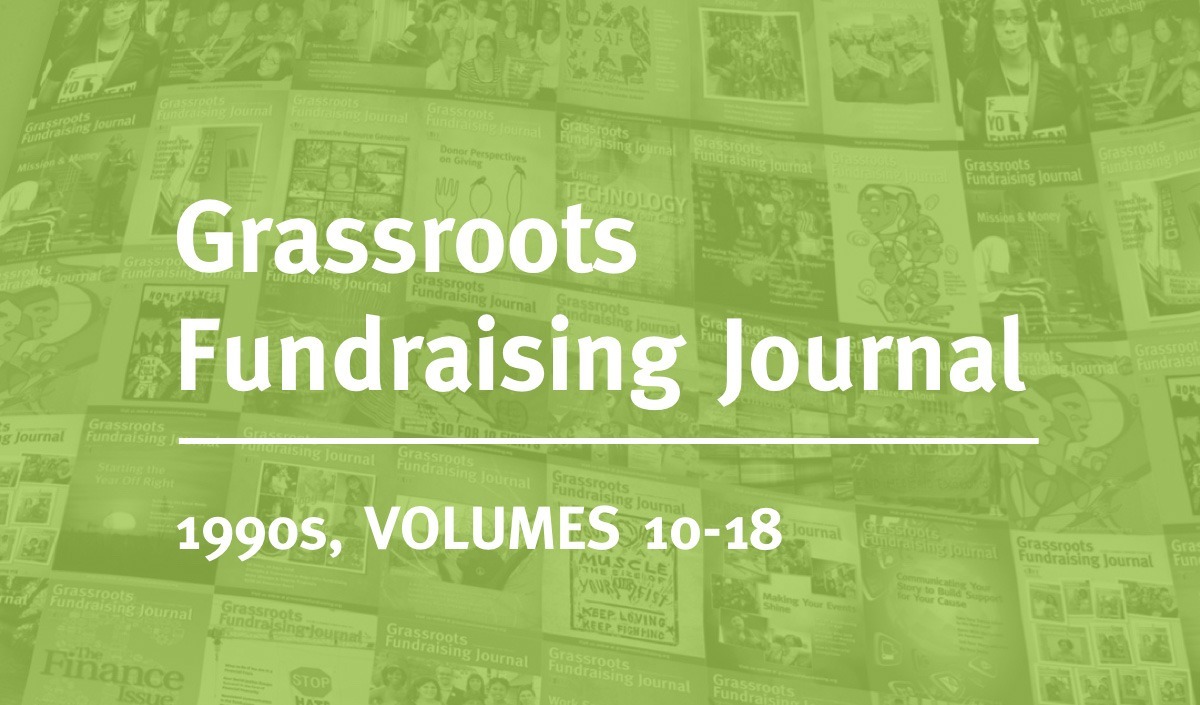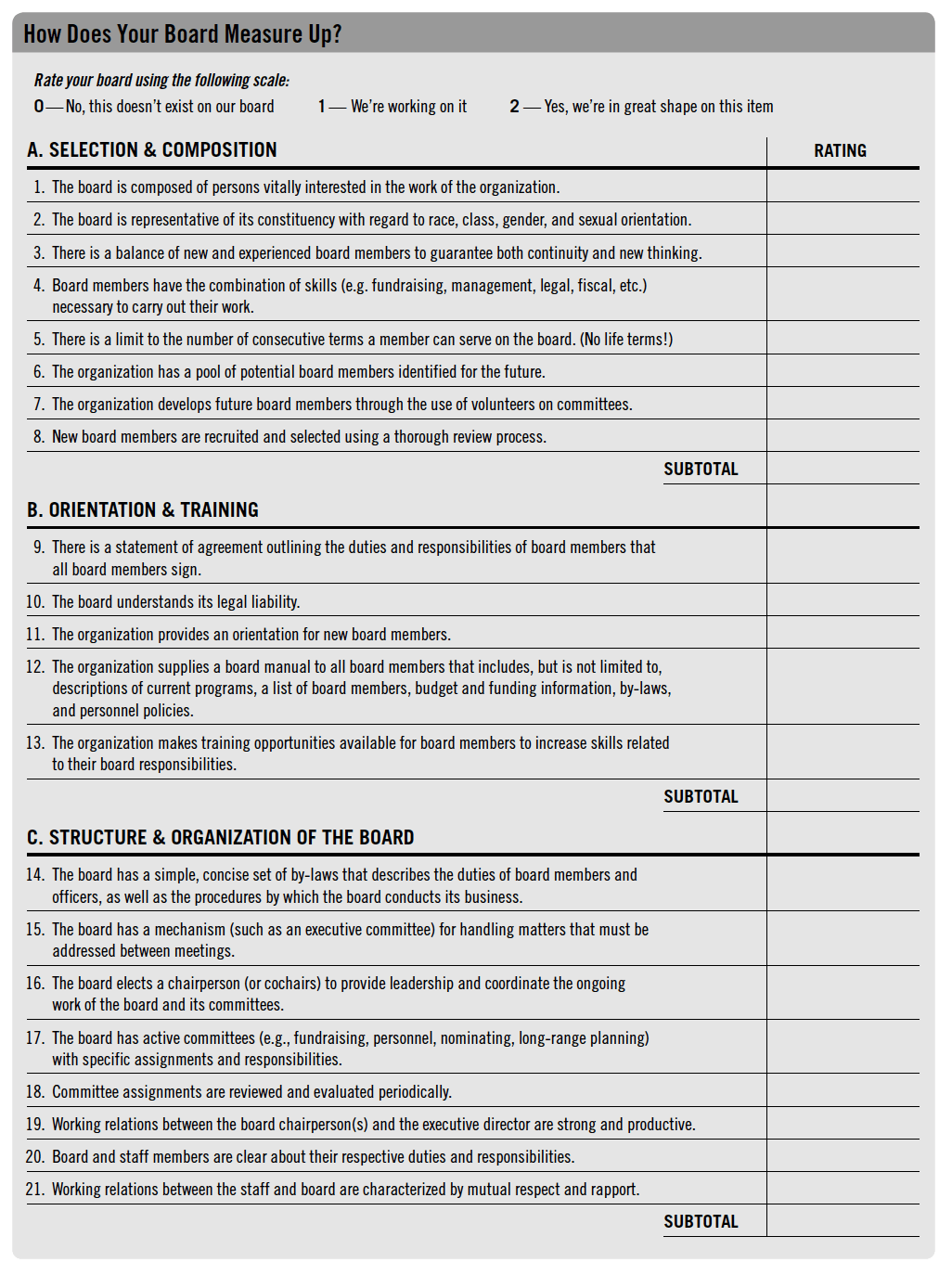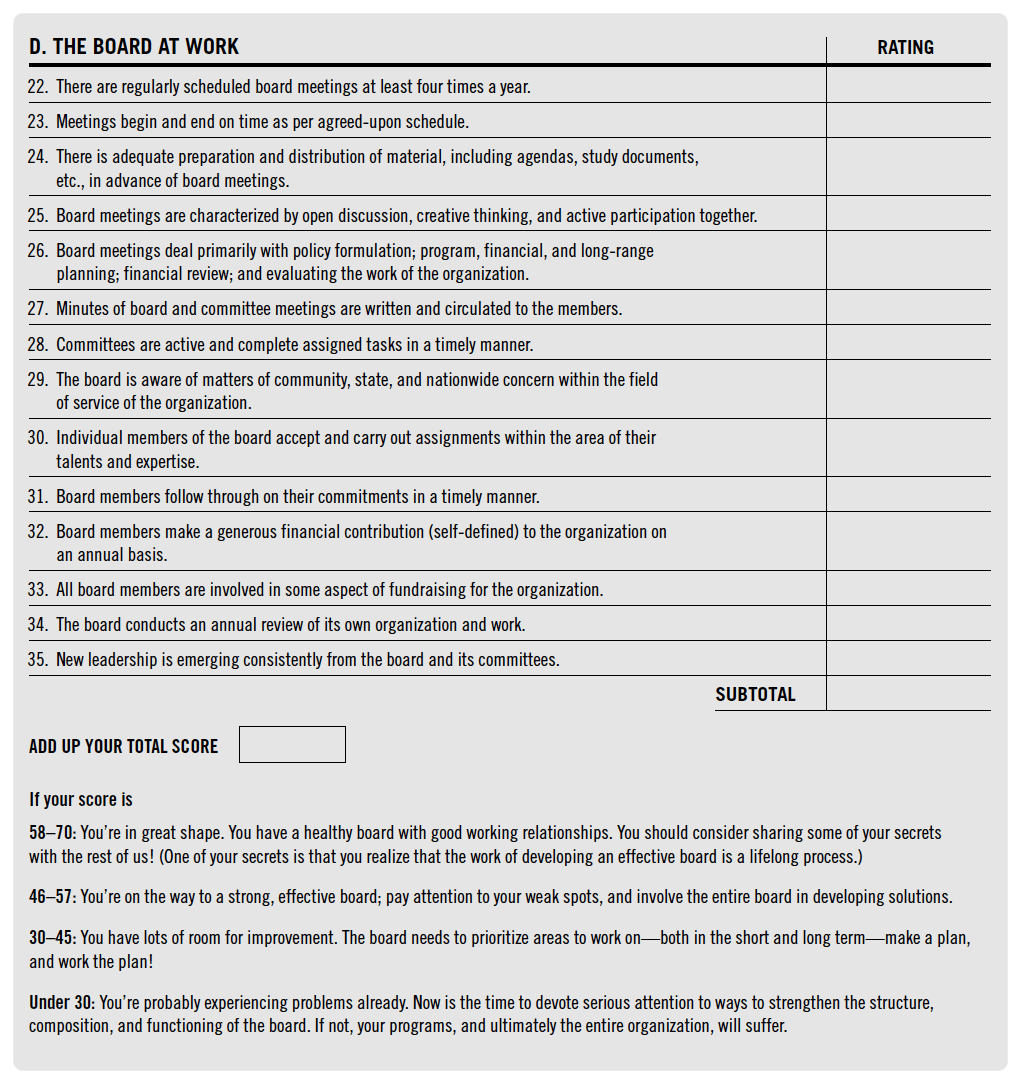
Editors’ note: This article, first published in print during August-1998, has been republished for Nonprofit Quarterly with minor updates.
Want a quick and simple way to evaluate the strengths and weaknesses of your board? The chart that follows is a useful tool for identifying areas where your board’s structure and functioning may need improvement.
There is no magic formula to a high-functioning board, and you do not necessarily have serious problems if your board is not structured or organized as the items on this chart suggest. Nevertheless, the exercise of completing this chart as part of a larger board evaluation process can be extremely useful in determining areas that most need attention, development, and/or reorganization. The scoring gives you a way to place your board on a scale that ranges from most to least effective.
Sign up for our free newsletters
Subscribe to NPQ's newsletters to have our top stories delivered directly to your inbox.
By signing up, you agree to our privacy policy and terms of use, and to receive messages from NPQ and our partners.
Keep in mind that boards change when the board members themselves are clear about the need to do so. More real progress results when board members can see for themselves how they measure up than when they are told by the executive director or an outside consultant. This chart is a guide by which your board can decide for itself what needs to change.
Remember too that board members are volunteers, with busy lives apart from the time they serve on the board. Progress may be slow, but as long as it is steady, you will experience positive outcomes.
The work of developing a board is ongoing for the life of your organization. Though you will face different challenges at different stages, there is never a point at which you will have a “perfect” board. Like relationships, families, and communities, the board is a part of an evolving and changing organism. With luck, the challenges will not overwhelm or discourage you, but provide keys to new ways of moving forward.
Using the Chart
- Schedule a board meeting at which you can focus the entire meeting on the process, or make it part of a longer board retreat.
- Distribute a copy of the chart to each board member to fill out so that everyone has the opportunity to express their opinion about how the board is functioning.
- Use the group’s responses as a guide to the areas it most wants to work on now. If more than a couple of areas need attention, choose the top two or three that can be the focus of the board’s work for the next six months. There will always be things that need improvement; you will make more progress biting off smaller rather than larger pieces at one time.











